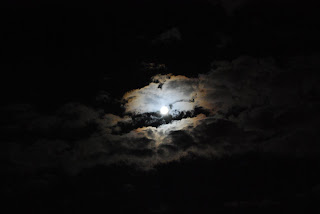One of the great things about digital photography is that you can do a lot in 'Post Production'. With programs like Photoshop and Aperture 3 (and even in iPhoto) there is plenty of manipulating to be done to improve the shots you take.
I am lucky enough to have many friends who are amateur photographers and we exchange ideas and tips... but even better than that, I know two Pros who have been very helpful to me in the past couple of months. David Colt (www.davidcolt.com) specializes in professional golf tournaments, commercial products and lifestyle photography. And Marilyn Humphries (www.humphriesphotography.com) is a photojournalist who documents events for news and social media outlets. Her work appears in local newspapers, national magazines and even in a book called "Courting Equality" published in 2007. Check out their websites... they are both outstanding.
Both Marilyn and David agree that the best thing to do is to take the shot right the first time so you don't need to manipulate it in Post Production. It's not the camera that takes a great shot, it's the photographer.
This is why I have been experimenting with shooting in different Modes with different settings. Today I am going to share with you the result of this experimentation.
Tonight is the night of the Full Thunder Moon so I went out to shoot the moon, and this is what I got:
In this first shot, all I did was zoom out all the way in Auto mode:

Then I zoomed all the way in which gave me a little more light (and the passing clouds added a nice dramatic effect):

Next, I zoomed back out just a little, but changed the exposure compensation:

Then I zoomed out again so that I could get the reflection in the water:

As the Earth rotates and the moon changes position in the sky, I had to change the camera from horizontal to vertical to catch the reflection in the water. Because I zoomed so far out, it got a little dark again. This photo almost looks black and white, but it isn't:

When I switched to Aperture Priority Mode... suddenly the sky brightens right up! And even though the moon was behind the clouds, the camera gathers enough light to make the sky almost appear to be daylight:

And when the moon comes out from behind the clouds, it could easily be mistaken for the sun. Keep in mind that I took these photos around 11:30 PM:

I must have bumped something for this shot, because the flash went off and lit up the retaining wall:

I tilted the camera back up to get the wall out of the photo (you can still see it in the bottom right hand corner). This is one of those times when cropping the photo is a handy tool:

And in this shot I have the ISO setting up all the way to 1600 which helps let in a lot of light. It makes this shot almost seem like daytime:

Of course one of the other things that is crucial in this type of low light photography is using a tripod! The shutter stays open for so long that there is no way to hold the camera steady enough without any movement at all (causing 'Camera Shake'). This is what makes some photos that would have been in focus, blurry.
Hope you are enjoying these photos, so far. Feel free to let me know if there are any interesting subjects you would like to see on this site. Also, let me know of any upcoming events that you think might be fun to photograph.
And if there are any volunteers out there who want to sit for a session... now is your chance! If you don't mind letting me use some of the good photos on my new Photography Website you can have the session for free and access to all the photos we take. Note: this offer expires as soon as the website is running live!
Just a reminder that you can click on any of these photos to enlarge them if you would like to see more detail. Enjoy.
Peace and Love,
------Nick
No comments:
Post a Comment